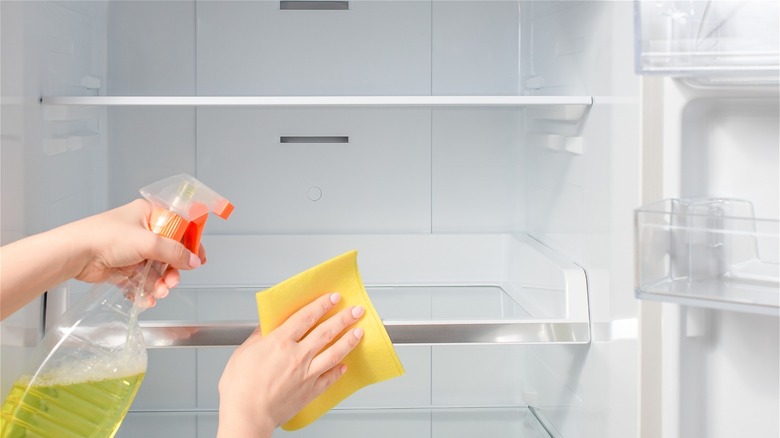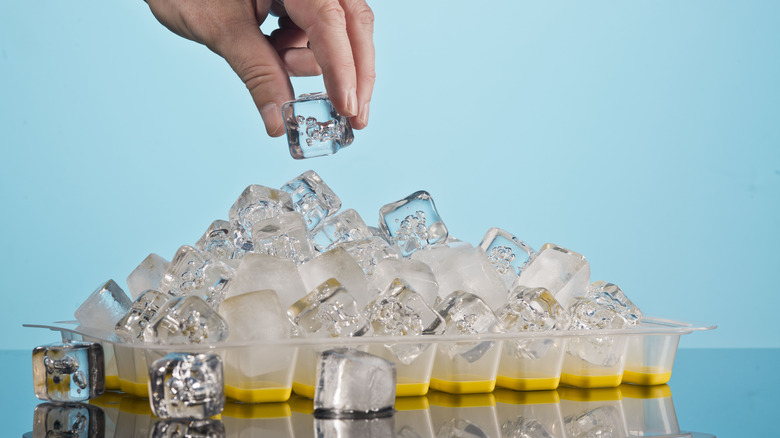The Important Fridge Area That You Might Be Forgetting To Clean
The kitchen is a sanctuary for amateur home cooks and professional chefs alike. It's where recipes come to life and common kitchen tools transform into magic wands, turning simple ingredients into culinary masterpieces. Among the essential appliances, handy tools, and hidden gems you can find in a kitchen, the refrigerator is its motherboard.
Refrigerators keep our water filters cold and our beers even colder. It's where raw fish and limes synergize to create fresh ceviche, where cold brew steeps to caffeinated perfection. Oh, and it keeps our food fresh. Long story short, a refrigerator is one of the most important kitchen appliances of them all. But like any great machine, a refrigerator requires upkeep. It's critical to keep both your refrigerator and freezer disinfected so your food (and booze) stays as fresh as possible. According to the Australian Institute of Food Safety, unclean fridges are a breeding extravaganza for salmonella, listeria, and E. coli, all of which can cause a gnarly bout of food poisoning.
So, while you might be good about cleaning your fridge, clearing out your cheese drawer and getting rid of the expired sauces in the fridge door, you might be overlooking an often forgotten area found in your freezer.
You should always clean out your freezer's ice storage
Whether your refrigerator is up to date with a freezer that automatically produces ice or you make it the old-fashioned way with an ice tray and tap water, cleaning out your freezer's ice storage is an overlooked yet hugely important task. Since ice isn't stored in an airtight container like most frozen food, it's often exposed to odors, bacteria, and other pollutants, leading to ice with an unpleasant taste, per The Washington Post. And let's be honest, no one wants their morning cold brew with dusty ice.
Another reason to consider regularly cleaning our your ice storage compartment is to avoid cross contamination. If you're handling raw meat and then touch your ice tray without properly washing your hands, it's possible that bacteria from the food could transfer to the ice, leading to illness if consumed, points out First For Women.
If it's dishwasher-safe, you can simply toss your ice bin (or any removable parts of it) in the dishwasher. Not an option? No problem! Maytag says a clean dish rag with mild soap or vinegar and warm water will clean out your handy ice dispenser. Martha Stewart also recommends water and baking soda as an all-natural cleaning combo, whether you have an ice maker or tray. Be sure to complete this process at least twice a year for ice makers, or monthly for trays. Now, here's to a cleaner, healthier kitchen sanctuary!

